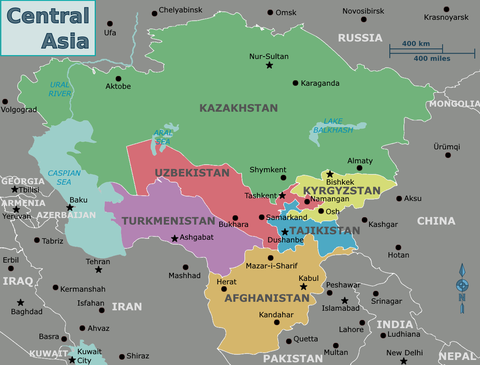EDEN BLOGS
India-Central Asia Summit
Context:
- Recently, first-ever India-Central Asia Summit has been hosted by the Prime Minister of India, in virtual format. This summit was attended by Presidents of the Republic of Kazakhstan, Kyrgyz Republic, Republic of Tajikistan, Turkmenistan and Republic of Uzbekistan.
- The current India-Central Asia Summit coincided with the 30th anniversary of establishment of diplomatic relations between India and Central Asian countries.
History:
Over the last few years, India and the Central Asian countries have been rapidly consolidating strategic engagement in addressing the emerging challenges, based on mutual trust, understanding, and shared vision of security and progress for the people of both sides. But the history of both the regions can be clubbed as:
- The linkages between the Indian subcontinent and Central Asia can be traced back to the Indus valley civilization days, but disturbed after India’s partition in 1947 as New Delhi found itself without a direct land corridor to the region.
- In the decades after India’s independence, India’s close political relations with the Soviet Union helped ensure continued diplomatic ties with Central Asia.
- Due to increasing presence of China, India formulated its Connect Central Asia Policy in 2012 to improve its relations with the Central Asian region.
- The relations between India and the Central Asian countries witnessed a remarkable upswing when Prime Minister Narendra Modi visited all five countries back-to-back in July 2015.
- This momentum has further got traction during the January 2022 Summit
Objective of the Summit:
Prime Minister of India outlined three major objectives for the summit.
- Cooperation between India and Central Asia is essential for regional security and prosperity. From Indian point of view, Central Asia is central to India’s vision of an integrated and stable extended neighbourhood.
- To give an effective structure to our cooperation. This will establish a framework of regular interactions at different levels and among various stakeholders.
- To create an ambitious roadmap for our cooperation.
Themes for the Discussion:
The leaders discussed the critical proposals of mutual interest to strengthen cooperation especially in the following areas:
- Defence and Security
- Trade and Connectivity
- Development Cooperation
- Medical and Healthcare Cooperation
- Energy Security
- Cultural and People to people Contacts
- Peaceful, Secure and Stable Afghanistan
How the summit visualised an ambitious roadmap for the coming years?
Strategic partnership:
- India-Central Asia Centre in New Delhi will function as Secretariat for the India Central Asia Summit that will be held biannually). This will increase the institutional collaboration.
- A proposal for creating India-Central Asia Parliamentary Forum to enable robust deliberations between the legislature of these countries.
- Issuance of joint postal stamps to celebrate the 30th anniversary of establishment of diplomatic relations.
Trade and connectivity
- Overland connectivity facilities were highlight of the summit.
- The connectivity projects were visualised as “force-multiplier for trade and economic cooperation, and contacts between countries and people” and therefore, they need to be upgraded with top priority.
- The two sides agreed to utilise the services of the Shahid Beheshti Terminal at the Chabahar Port for facilitating trade connectivity.
- Optimal utilisation the International North-South Transport Corridor (INSTC) as well as Ashgabat Agreement on International Transport and Transit Corridor (ITTC) to enhance connectivity between India and the Central Asian countries was also discussed.
Energy cooperation:
- The Central Asian leaders showed interest in the Indian initiative of “One Sun, One World, One Grid” that aims at promoting inter-connected solar energy infrastructure at a global scale.
- The summit emphasised on the need to establish cooperation between specialised national institutions in areas of renewable energy, information, digital, and advanced technologies.
Others:
- To enhance people-to-people contact and harness human talent between each other, the Central Asian leaders appreciated New Delhi’s role in capacity building and human resource development of their countries.
- The summit call for propelling trade in sectors like medicine, healthcare, pharmaceuticals, education, information technology, infrastructure, agriculture, energy, climate change, space, amongst others reflect the promise and versatility of the evolving relations.
Conclusion:
The consolidation and convergence of India-Central Asia relations are distinctly perceptible. The deep commitment towards taking the evolving partnership to newer heights is potentially transformational for maintaining the geostrategic equilibrium of the region and the world as India takes over the Presidency of the G-20 grouping in 2023.


{{doubts.user.firstName}}
{{doubts.createdAt | formatDate}}